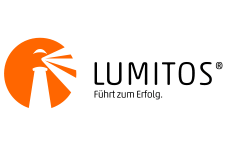Um alle Funktionen dieser Seite zu nutzen, aktivieren Sie bitte die Cookies in Ihrem Browser.
my.chemie.de
Mit einem my.chemie.de-Account haben Sie immer alles im Überblick - und können sich Ihre eigene Website und Ihren individuellen Newsletter konfigurieren.
- Meine Merkliste
- Meine gespeicherte Suche
- Meine gespeicherten Themen
- Meine Newsletter
24 Infografiken zum Thema Periodensystem
rss| Sie können Ihre Recherche weiter verfeinern. Wählen Sie aus dem linken Bereich passende Suchfilter aus, um Ihre Ergebnisse gezielt einzugrenzen. |
This last one shows the various known oxidation states for the different elements in the periodic table. It’s probably of more use to the chemists out there than for general interest; still, if you are curious as to what it depicts, there’s more detail in the original post.
Not all of the elements in the periodic table are plentiful. While we will not ever truly run out of an element, some are considered endangered in the sense that in the future they may betoo spread out and costly to extract. This table, made in collaboration with the American Chemical Society’s ...
For elements discovered more recently, a catalogue of names have been seriously and not-so-seriously suggested before the official names were confirmed. Past elements, too, have been subject to naming variations, be it due to simultaneous discoveries, language differences, or scientific squabbles ...
The origins of the elements’ names are varied both in terms of language and in terms of what they were named after. This table, created in collaboration with Prof. Mark Lorch from the University of Hull, tries to pin down where those names come from. There’s also an accompanying explanatory ...
Here’s a periodic table that’s crammed with data. It includes the melting point, boiling point, density, electronegativity, radius, and first ionisation energy of each element in the table. It’s also colour-coded to show how these properties vary from element to element.
The periodic table has actually only just been ‘completed’ in the past year.Four new elements had their discoveries and names confirmed in 2016, and replaced the last few placeholder positions in the table. I say ‘completed’ because scientists are still trying to create elements beyond element ...
Die Oxidationsstufen der Elemente hängen stark mit ihrer Stellung im Periodensystem zusammen. Hauptgruppenelemente haben in der Regel eine geringere Anzahl von Oxidationsstufen. Bei Nebengruppenelementen kann die Zahl der Oxidationsstufen sehr hoch sein.
With fournew element names officially confirmed last week, it’s past time the Compound Interest Periodic Table of Data was updated to include them! Here’s the updated table with nihonium, moscovium, tennessine and oganesson in their rightful places; the version above has a key denoting the ...
The metal reactivity series is a commonly taught concept in chemistry, placing the metals, as its name suggests, in order of reactivity from most reactive to least reactive. It’s also a useful tool in predicting the products of simple displacement reactions involving two different metals, as well ...
Dates & Countries of Discovery
This graphic looks at the discovery dates of the elements, as well as the countries in which they were discovered, and plots them all on a timeline to give some idea of the order of discovery.
Sie erhalten passend zu Ihrer Suche die neusten Suchergebnisse per E-Mail. Dieser Service ist für Sie kostenlos und kann jederzeit abbestellt werden.













